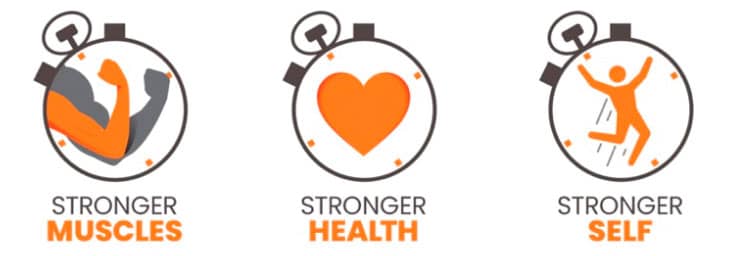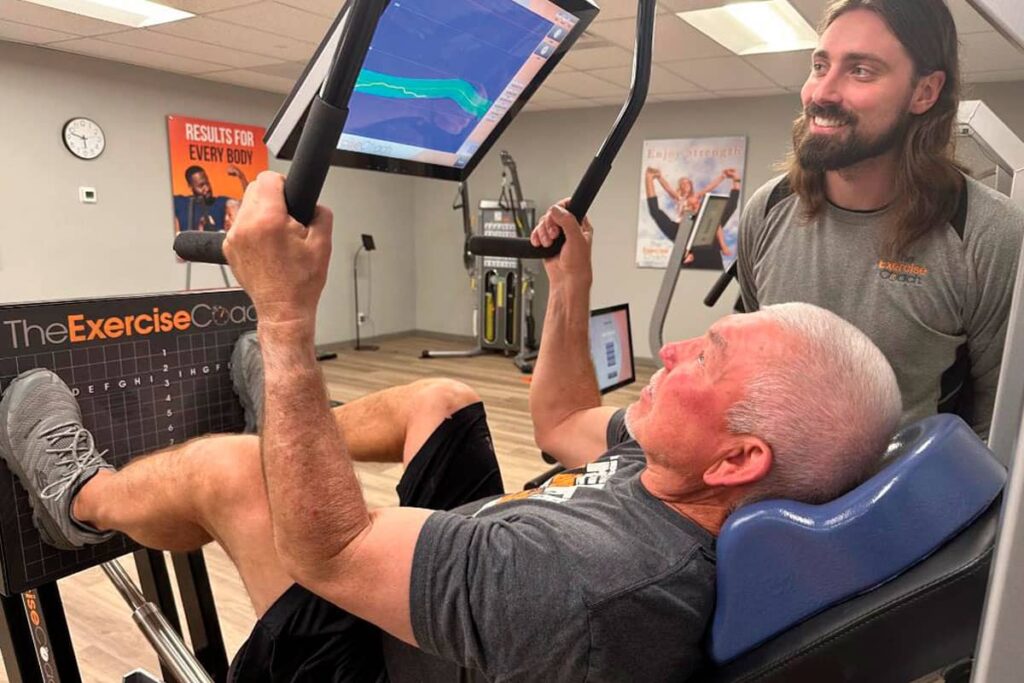With type 2 diabetes, heart disease, and America’s waistline bulging to frightening highs, what we think we know, and what we’ve been led to believe about fat loss, is not only wrong, but completely backward.
That’s right. Your difficulty losing weight is truly not your fault. You have been misinformed for years about healthy eating (i.e., fat makes you fat; replace fat with carbs). You have been misinformed about exercise’s role in reducing body fat. And, you have been bombarded by celebrity messages that claim, “This worked for me, so it will work for you.”


At The Exercise Coach®, we make it our policy not to cave in to popular fitness trends, but rather to go wherever the science of fat loss and exercise leads us. It is our hope that you take the time to read, understand, and pass along this information to as many people as you can.
Share it with others so together you can maximize your fitness and fat-loss efforts while enjoying total freedom from time-consuming and defeating conventional approaches. You can enjoy maximum fitness and fat loss results with just 20 to 40 minutes of exercise per week – and I will tell you how. First, let’s start tearing down the myths.
MYTH #2 CALORIC RESTRICTION + WILLPOWER = WEIGHT CONTROL
Everybody knows that if you just eat less, you’ll lose fat. Right? Wrong! While it is true that a caloric deficit within your body is necessary to lose weight, this deficit alone does not guarantee fat loss.
Fat loss requires the regulation and control of insulin. Insulin is a hormone. Hormones are like biological instant messages. When they hit a cell membrane, they communicate a specific message to that cell, and the cell reacts.
When insulin hits the membrane of a fat cell, it says, “more fatty acids are on the way; make room.” And fat cells are very accommodating to insulin. In fact, it appears that there is no limit to their ability to make room to store fatty acids.
Unfortunately, this means fat cells have an almost limitless ability to grow in size. So, starve the fat cells, right?
Well, the problem with caloric restriction is that it puts your body into a catabolic state. Just because you start consuming fewer calories, that doesn’t ensure the weight loss comes strictly from your fat. Sure, you will lose some fat, but it is estimated 25 to 50 percent of the weight one loses from dieting, without strength training, comes from lean mass, i.e., muscle, bone, organs, etc.
This means that you will lose muscle, the most metabolically active tissue (calorie-burning tissue) within the body. In addition, calorie restriction can send threat signals throughout your body, causing it to pull some other nifty metabolic tricks to burn fewer calories as a survival technique.
This is called adaptive thermogenesis. These consequences of calorie cutting mean that a return to normal eating will even more readily lead to fat accumulation. Did you know that literally 95 percent of people who succeed on a diet regain all the weight they’ve lost within
one year? That’s not even the whole story. The majority of people, due to diet induced muscle loss, end up with even more body fat than before they dieted.

This is the danger of what has long been called yo-yo dieting. Nutrition and exercise strategies must be focused primarily on the creation of sustainable weight loss and the long-term maintenance of muscle any—effect on insulin.
Carbohydrates (all breads, pastas, grains, chips, junk food, regular soda, cookies, candy, etc.), on the other hand, are converted into sugar, i.e., glucose. Glucose is food for the brain and fuel for our muscles. So, after digestion, glucose is absorbed into the blood stream and is used by the brain, our muscles, or is synthesized into glycogen to be stored in the muscles for later use.
Unfortunately, our muscles/liver can only store so much glucose, which begs the question – what happens to the extra glucose? The answer is that insulin is called into action to get rid of it.
Since insulin has already tried to stuff the excess glucose into our muscles (as glycogen) with no avail, it heads to the liver, which converts it into triglycerides so it can be stored as fat. (Note: Elevated triglycerides are a good indicator of serum insulin levels that are too high and are a major risk factor for heart disease and diabetes.)
Thus, the dangers of excessive carbohydrate consumption not only lead to difficulty losing fat, but also puts your health at risk.
In addition to elevated triglycerides, excess insulin activates an enzyme which turns the omega-6 fatty acids – so prevalent in the American diet – into a substance called arachidonic acid. This fatty acid is the building block of a type of hormone that causes inflammation in the body. And, science is demonstrating that inflammation is the root cause of heart disease, stroke, some cancers, autoimmune deficiencies, and brain disorders.
Coming next month, Myth No. 3. In the meantime, the choice is yours to make, and at The Exercise Coach®, we can help.
Make TODAY the day to start on that road to better health and fitness! Let our caring and knowledgeable Certified Coaches get you started! Call, text, or visit us online for your complimentary Initial Consultation and 2 FREE Sessions at (480) 716-6080 or exercisecoach.com\north-mesa.

